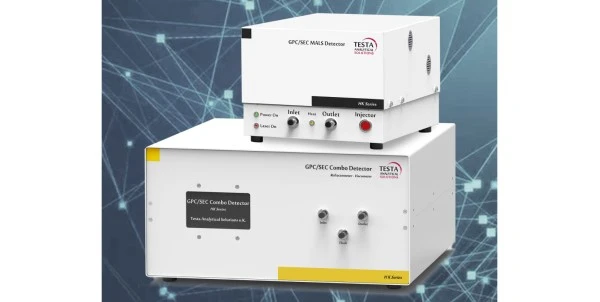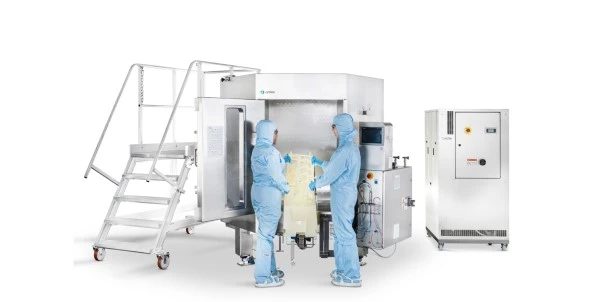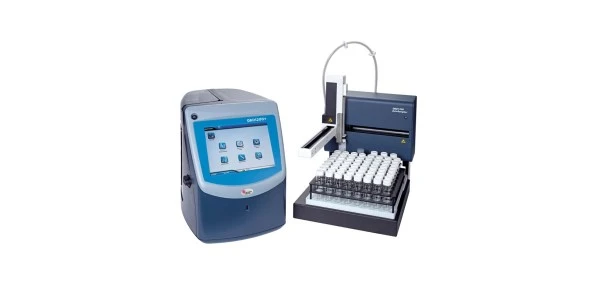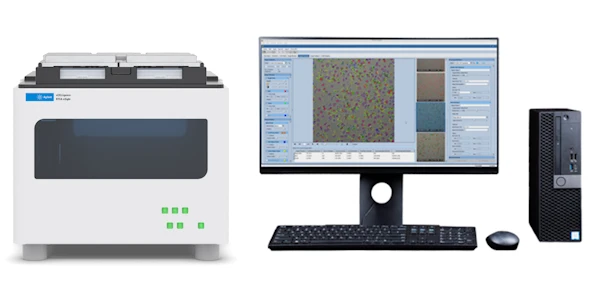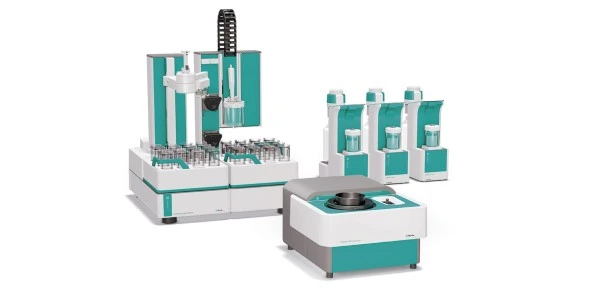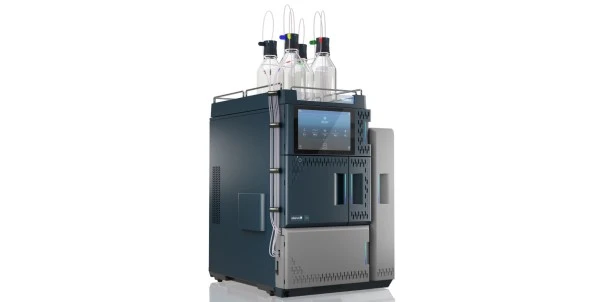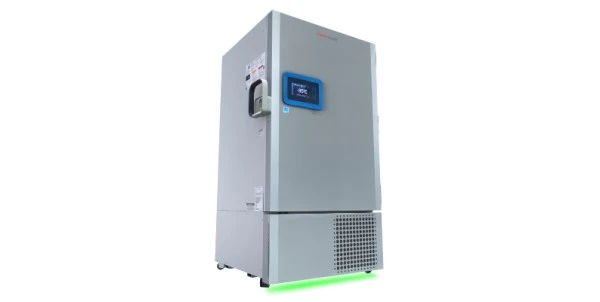Innovations to boost performance and to address limitations of conventional technologies
The precision, range, and dynamics of temperature control are vitally important factors in chemical process engineering. The performance metrics of temperature control systems can significantly influence the accuracy and quality control of chemical process applications in research, pilot plant, and kilolab operations.
The new Unistat temperature control systems from Huber apply innovative technology and advanced performance features that allow unparalleled achievement. The new product offerings include the Petite Fleur, Grand Fleur, Tango, and 60 individual models, designed to elevate thermal control and efficiency, while meeting expectations for quality and performance.
The new Unistat product platform starts with significant innovations in effective thermal transfer. Traditional thermal control technologies rely on open bath thermostats and thermal fluids with certain drawbacks. Conventional open baths have limitations in the dynamic range of temperature control, as the larger volumes require increased energy input and time to affect temperature change. Furthermore, thermal fluid can degrade, evaporate, and oxidize thereby changing the thermal conductivity and stability of the fluid. Safety concerns regarding the fluid flashpoints also can limit the effective range of the instrument.
The Unistat principle addresses these issues by circumventing the use of a bath, opting instead for a system using low internal volume in conjunction with an expansion vessel. Essentially, circulators without a bath.
The decreased volume results in dramatic increases in the rate of temperature change, thereby enabling cooling rates of several hundred degrees per hour. The expansion vessel is built to handle the change in fluid volume that accompanies changes in temperature. The decreases in fluid volume further minimize deleterious effects in terms of stability and safety. These features greatly enhance both the rate and the range of temperature control, without sacrificing functionality across a spectrum of applications.
The extended temperature range of the new Unistat technology is a result of not only the unique fluid control system, but also an extension of the energy efficiency that comes with the thermal transfer process. Conventional technologies often pair the capabilities of specific device formats with specific applications. For example, limitations associated with bath size and temperature response may also dictate the “best fit” or suggested applications. The Unistat technology scales, meaning the same technology and core components that are used in smaller research-scale devices are also present in large process-scale devices as well.
The temperature response rate or thermal dynamics of Unistat devices also address a number of important considerations. As a reaction progresses, changes in reaction mass must be coupled with an accurate and responsive heating or cooling system in order to maintain optimal reaction conditions. Likewise, exothermal or endothermal reactions must be effectively controlled in order to maintain performance while ensuring the safety of the process. Pump speed and flow rates are also important, and although high pumping pressure is often cited as a valuable metric, this elevated pressure can actually be detrimental to fluid flow. The new Unistat devices integrate high pump speed performance and enhanced flow rate capacity in order to maximize heat transfer and minimize the negative effects of high pressure.
Beyond thermal control, the new Unistat product line incorporates design features aimed at optimizing function and addressing potential issues. To further support increased pump speed and flow rates, the new Unistat devices use improved pump connections with wide internal diameters – with the added benefit of minimizing flow rate and pressure variations. The units also have a unique water separation system which allows residual water from cleaning, storage, or previous usage to be removed, thus preventing ice build up during low temperature methods and the potential expenses associated with repairs. The systems also incorporate a True Adaptive Control (TAC) option which let the user maintain close control through user defined ramp rates of faster or slower temperature responses, as an alternative to manual control.
Another incredibly useful feature of these new devices is the integration of the Pilot ONE controller, a removable touchscreen device with features including: the programmer, adaptive cascade control, ramp function, calendar start, select menus, sensor calibration, and both analog and digital interfaces to extend the integration of these devices to external process control systems. The Pilot ONE controller also enhances safety by continuously monitoring operations, activating user defined alarms in the case of a malfunction or reaction fault. This allows unattended operation and failsafe emergency shutoff or low temperature holding settings to prevent process or device damage or loss.
The scalability of the Unistat technology is showcased in the range of new device formats, accommodating applications from small research lab to large manufacturing plant operations.
Precision temperature control capabilities span from -125 to 425 °C and cooling capacities range from 0.7 to 130 kW. The portfolio of devices range in size from compact units to those involved in production scale reactors. The over 60 models offer numerous solutions whether they be tower housings, flat-build, or flexible scale-up configurations, or whether the application be Research, Kilolab, Mini Plant, Pilot Plant, or Production Plant scale.
The small Tangos are the entry point into the new Unistat line, with the Petite Fleur serving the purpose of precise research-scale control combined with compact size, with temperature control parameters of -40-200 °C and cooling power of 0.45 kW. Next comes the Grand Fleur devices, which maintain the temperature control range and expand the cooling power to 0.6 kW, while maintaining a relatively modest size. The Tango devices extend temperature control and response further to -45 to 250 °C and 0.7 kW respectively, without compromising accuracy and precision.
Beyond these offerings is an extensive collection of devices with the concepts of “fit for purpose” and “scalability” in mind. Dynamic temperature control extends to -60 °C and cooling power increases to 130 kW across this product spectrum, with each model suited for user specified operation. The wide diversity in offerings not only addresses the needs of specific applications and labs, but supports the possibility of scale up to meet the needs of growing operations without the need for new methods and technology infrastructure.
Advantages of the new Unistat line of products include low cost of operation and a low impact on the environment. Due to the advanced design, Unistat devices achieve greater efficiency and consume lower energy than conventional devices. The power management system results in lower energy usage while the fluid exchange system results in lower water consumption, prevents buildup of oil vapors and oxidation, and extends service intervals and the overall life of the device.
Huber has consistently been ahead of the curve with respect to environmentally friendly components and refrigerants. As such, the new Unistat line of devices use natural refrigerants that are HCFC, HFC, and PFC free. This combined with the use of fully recyclable stainless steel, copper, and high-grade polymer construction materials equates to a range of Huber technologies that are leading the way in innovative and sustainable manufacturing practices.
In summary, the new Huber Unistat line of thermoregulation devices build upon a rich history and incorporate modern technology, enabling high precision temperature control and response across a spectrum of applications and process scales. By minimizing the impact of conventional limitations while extending device performance and efficiency, Huber has raised the bar significantly. All of this while also considering cost of operation and environmental impact makes the new Unistat product line a valuable and sustainable collection of thermal control solutions.



